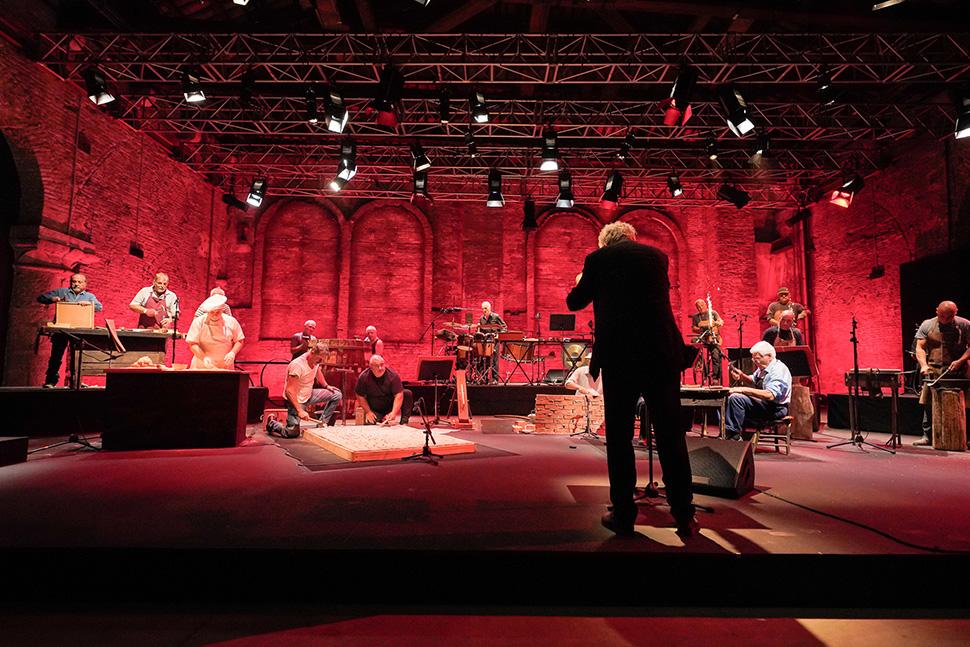| Year / Length: | 1981, 60’ |
|---|---|
| Subtitle: | Music theatre for one actor, four women's voices, sixteen craftsmen and solo percussion |
| Libretto: | Giorgio Battistelli after the Encyclopédie ou Dictionnaire raisonné des sciences, des arts et des métiers by Denis Diderot and Jean Le Rond D’Alembert |
| Actor: | Peppe Servillo |
| Percussion: | Nicola Raffone |
| Female chorus: | Paola Calcagni, Flora Molle, Rosa Pulcini, Anna Rita Severini |
| Coopers: | Alfredo Sannibale, Fabio Sannibale |
| Carpenters: | Roberto Festuccia, Alberto Casini |
| Baker: | Marcello Di Palma |
| Pavers: | Oberdan Carpineti, Pietro Melelli |
| Bricklayers: | Ciro Paudice, Wladimiro Carpineti |
| Blacksmiths: | Gianni Sannibale, Marco Sannibale |
| Knife sharpeners: | Aldo Sardilli, Luigi Battistelli |
| Cobblers: | Enzo Iezzi, Luigi Diotavelli |
| Stone-mason: | Francesco Campanella |
| Light design: | Angelo Linzalata |
| Conductor: | Giorgio Battistelli |
| Sound engineer: | La Biennale di Venezia - CIMM (Centro di Informatica Musicale Multimediale), Thierry Coduys |
Giorgio Battistelli - Experimentum Mundi

Description
Experimentum Mundi is a music theatre work for sixteen artisans, four natural female voices, a percussionist and an actor. As the captions to the illustrations of Diderot and D’Alembert’s Enlightenment Encyclopédie describing the tools and the trades represented on the stage are recited, a veritable village of sounds arises page after page. The work is about Giorgio Battistelli’s home town, Albano Laziale, and about those who live and work there who, in Experimentum Mundi perform their own professions, occupations that are today on the brink of disappearing: the baker, the cobbler, the knife sharpeners, the carpenters, the coopers, the blacksmiths, the pavers, the stone-mason, the bricklayers, some accompanied by their wives, who make up the women’s choir. At the end of the performance, each artisan makes his own artefact on stage, in perfect synchrony with the musical and theatrical timings of the score, in a game of interlocking timbres and rhythms that extol the gestures moulded by an ancient tradition. It is a dramaturgy of work, a rite propitiating the halting of time, homage to a personal theatre of the memory.